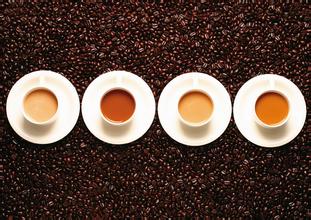Those countries produce coffee cans, coffee cans, car cans
Tarrazu, Costa Rica, is one of the world's leading coffee producers, producing coffee with a light, pure flavor and pleasant aroma. Costa Rica's volcanic soils are fertile and well drained, making it the first country in Central America to grow coffee and bananas for commercial value. Coffee and bananas are the country's main exports. Coffee was introduced to Costa Rica from Cuba in 1729, and today its coffee industry is one of the most organized in the world, producing up to 1700 kilograms per hectare. Costa Rica has a population of 3.5 million, but coffee trees number 400 million, and coffee exports account for 25% of the country's total exports. Costa Rica also benefits from the Turrialba of the Central American Agricultural Research Institute (IAAC), an important international research center, established in Tarasu.
High-quality Costa Rican coffee is known as "extra-hard" and can be grown at altitudes above 1500 meters. Altitude has always been a problem for coffee growers. Coffee beans are better at higher altitudes, not only because higher altitudes increase the acidity of coffee beans and thus enhance flavor, but also because lower night temperatures at higher altitudes cause trees to grow slowly, thus making coffee beans more flavorful. In addition, due to the high altitude drop caused by sufficient rainfall, coffee tree growth is also very favorable. However, while there are many advantages to growing coffee at higher altitudes, the additional transportation costs associated with it must be taken into account, which may well make coffee production unprofitable. Costa Rican coffee has adopted new technologies to increase efficiency, including the use of "electric eyes" to select beans and identify beans of irregular size.
Tarasu is located south of the country's capital, San José, and is one of the country's most prized coffee plantations. La Minita Tarrazu coffee is locally famous but produced in limited quantities, about 72600 kilograms per year, grown on land called La Minita, owned by the last three generations of the McAlpine family in England. In fact, the land produces more than 450 tons of coffee per year. But Tara Sulamita is grown without artificial fertilizers or pesticides, and is harvested and picked entirely by hand, to avoid some of the damage done to the beans by air-jet sorting.
Other coffees worth mentioning are Juan Vinas (PR), H.Tournon, Windmill (SHB), Monte bello and Santa Rosa. Fine coffee is grown in Geredia and the Central Valley. Another striking coffee is Sarchi (one of the five towns that represent Costa Rica's "coffee route"), which grows on the slopes of Poas Volcano, 53 kilometers from San Jose. Saatchi was founded in 1949 and has 30770 hectares of land to grow sugar cane and coffee. The area is also known for its handicrafts, attracting tourists from all over the world.
The country's coffee industry, formerly controlled by Instituto del Café de Costa Rica (ICAFE), has been taken over by the Official Coffee Council (Oficina del Café). Among coffee exports, those deemed substandard are colored with blue vegetable dye before being recycled for domestic sale. Coffee consumed domestically (dyed blue or undyed) accounts for about 10% of total production, and local coffee consumption per capita is twice that of Italy or the United States.
Cuban Coffee: It would be a pity if this country, which produces cigars, did not have good coffee to match it.
Cuban coffee
The best coffee in Cuba is Turquino or Extra Turquino. Tukino is a coffee grade rather than a place name, just like Blue Mountain coffee. This coffee is pure in flavor, medium-grained, and because it is grown at a lower altitude, it has a lower acidity than many coffees grown in Central America.
Cuba would undoubtedly become an important supplier of coffee to the United States and Japan if it were not affected by the political climate.
3. Dominica: Delicious, sweet, full-grain coffee
Dominican coffee
The Dominican Republic borders Haiti, which owns Hispaniola. Like its neighbour, the Dominican Republic had a history of revolution and poverty, but now had democratic elections and relative stability. Coffee was first grown in the Dominican Republic in the early 18th century, best in the Barahona region of the southwest, but Juncalito and Ocoa also produce a superior coffee, Santo Domingo coffee, characterized by freshness, fullness, excellent acidity and pleasant aroma, so it is worth it. Unlike coffee grown in Haiti, coffee grown in the Dominican Republic is mostly washed, a sign of high quality.
El Salvador: Unique, mild-tasting coffee.
Salvadoran coffee
El Salvador is one of the small countries in Central America and has a very dense population. Its coffee flavor is characterized by excellent balance. Today, this coffee accounts for 40% of the country's exports. The best quality coffee comes out in January to March after 35% of extra-hard beans are exported to Germany.
In the early 1990s, guerrilla warfare greatly damaged the country's national economy, reducing coffee production from 3.5 million bags in the early 1970s to 2.5 million bags in 1990 - 1991. The eastern part of the country was most affected by guerrilla warfare, and many farmers and workers were forced to leave their estates. The shortage of funds has caused coffee production to plummet, from 1200 kilograms per hectare in the past to less than 900 kilograms per hectare today.
In addition, in 1986 the Government imposed an additional 15 per cent duty on coffee exports, i.e. 15 per cent on top of the existing 30 per cent tax. Taxes, combined with unfavourable exchange rates, severely reduced coffee exports and, with them, quality. The government finally realized the huge role of coffee in the national economy, such as employment, foreign exchange and agricultural development, so it privatized part of the coffee export industry in 1990, hoping to increase the yield of coffee in the export market.
In Cuscacbapa, El Salvador, the beans are packed and ready for export. El Salvador coffee is a Central American specialty, light, aromatic, pure and slightly acidic. Like Guatemala and Costa Rica, coffee in El Salvador is graded according to altitude, with the higher the altitude, the better the coffee. The best brand is Pipil, the Aztec Mayan name for coffee, which has been approved by the Organic Certified Institute of America.
Another rare coffee is Pacamara, a hybrid of Pacas and Maragogype. The coffee is best grown in western El Salvador, adjacent to Santa Ana, near the border with Guatemala. Pakmara coffee grains are full, when the aroma is not too strong.
5. Guadeloupe: Good coffee production affected by natural disasters
Guadeloupe Coffee
This group of islands in the Caribbean used to be an important source of coffee. In 1789, more than 1 million coffee trees on 500 hectares produced 4000 tons, while today only 150 hectares are used for coffee cultivation. This decline can be attributed to increased sugar cane and banana production and the destruction of coffee trees by Hurricane Ines in 1996. Political reasons included the redistribution of land between 1962 and 1965, which resulted in a huge loss of coffee production. Coffee cultivation requires more man-hours and more capital than banana and sugar cane cultivation.
Guadeloupe used to be the best source of coffee, but it no longer exports coffee. Bonifieur is rated as the best coffee in the region, a name that coffee history has prided itself on.
6. Guatemala: The extra hard coffee beans here are full of particles, delicious and balanced, and the coffee prepared with them is pure and rich.
Guatemala coffee
Guatemala coffee once enjoyed a reputation as the best coffee in the world, but quality declined for a while. Happily, however, its popularity is gradually being restored.
In 1750, Father Jesuit introduced coffee trees to Guatemala, where German colonists developed the coffee industry in the late 19th century. Today, most of the coffee industry is produced in the south of the country. Here, the slopes of the Sierra Madre volcano provide ideal conditions for growing fine coffee beans, which grow at high altitudes. Critics prefer this blend of flavoured coffee with a spicy flavour to other types of coffee. The extra-hard coffee beans here are rare good coffee, it is full of particles, delicious, balanced acidity. Guatemala has also received attention for its giant coffee beans. The coffee industry, which once prospered the country, still dominates the national economy. Unfortunately, however, the political situation at home is not conducive to coffee growers. High output is usually a sign of overall economic prosperity in a country.

Important Notice :
前街咖啡 FrontStreet Coffee has moved to new addredd:
FrontStreet Coffee Address: 315,Donghua East Road,GuangZhou
Tel:020 38364473
- Prev

What are the different coffee introductions for Starbucks in different countries?
At first, coffee was very expensive in Europe. Only aristocrats could drink coffee, and coffee was even called black gold. Until 1690, a Dutch captain sailed to Yemen and got some coffee seedlings, which were successfully planted in Indonesia. In 1727, the wife of a diplomat in Dutch Guiana gave some coffee seeds to a Spaniard in Brazil, where he tried to plant them.
- Next

Common mistakes and tips for drinking coffee
Drink a cup of coffee for a few hours, hot coffee until cold, iced coffee until cold; 2 scoop cappuccino milk foam; 3 stir, put the spoon in the cup; 4 drink single coffee without trying, just add sugar and milk. Suggestion: 1. Coffee worth tasting can experience different flavor performance of coffee at different temperatures; other coffee, especially coffee with milk, should be used.
Related
- What brand of black coffee is the most authentic and delicious? what are the characteristics of the flavor of the authentic Rose Summer Black Coffee?
- Introduction to the principle and characteristics of the correct use of mocha pot A detailed course of mocha pot brewing coffee is described in five steps.
- Which is better, decaf or regular coffee? how is decaf made?
- How much is a bag of four cat coffee?
- How about four Cat Coffee or Nestle Coffee? why is it a cheap scam?
- Which is better, Yunnan four Cats Coffee or Nestle Coffee? How about cat coffee? is it a fake scam? why is it so cheap?
- How about Cat Coffee? what grade is a hoax? which instant coffee tastes better, four Cat Coffee, Nestle Coffee or G7 coffee?
- Process flow chart of coffee making-Starbucks coffee making process what coffee tastes good at Starbucks
- The top ten best coffee beans in the world Rose summer coffee or Tanzanian coffee tastes good
- Yunnan four cat coffee is good to drink?_four cat coffee is a big brand? four cat blue mountain coffee is fake?

